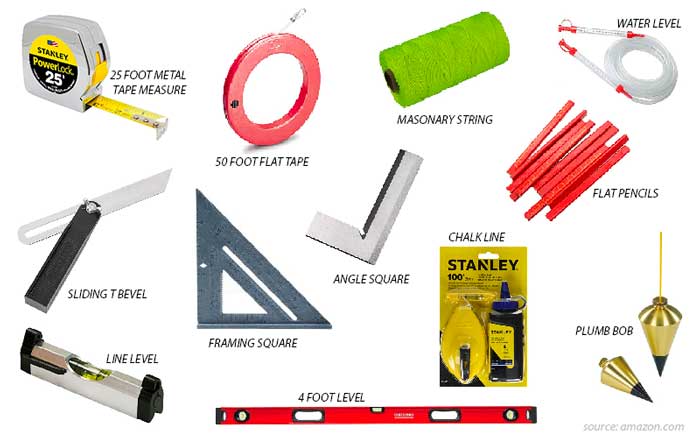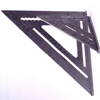Measuring Tools to Build a Deck Properly

What aspiring builder doesn't have proper tools?
Remember the saying, "Measure twice, cut once."
Don't rely on guesswork for any aspect of your deck building project, whether its a deck, a shed, an addition to your house, or anything else.
Here are the tools you should have and that you will use when you build your deck. The benefit is you will surely use them for other building projects around the house.
Measuring Tools and More
25 Foot Metal Tape Measure
50 Foot Flat Tape
A longer flat tape of 50 or 100 feet is the best way to go for laying out the deck position and post positions. It is beneficial for fencing, as well.
MASONRY STRING
Get the right kind of string that doesn't stretch. You will use this string to mark the perimeter of the deck or hang a line level from on shorter spans.
Flat Pencils
Besides being perfect to fit behind your ear and making you look like a seasoned carpenter, a flat carpenter pencil requires less sharpening. When you are writing on tough wood surfaces and the like, less sharpening is essential. Grab a few - they work and look cool!
Sliding T Bevel
Framing Square
Angle Square
Chalk Line
A chalk line comes in handy for marking the cut off lines of the decking boards. It is also great for marking any other long line you may need.
Line Level
This little level hangs on a masonry string and gives you a quick, reasonably accurate read on how level you are. The longer the distance, the tighter you have to pull the line to keep it from sagging, but on distances of 10 feet or less, it's quite handy and reliable.
Small Level
4 Foot Level
It's best to invest in an aluminum level because its less likely to bend or twist. This is probably the most common leveling tool you will use. It's long enough to span some distance but small enough to do almost every job.
Water Level
If you have a long area such as a ledger board that wraps around a corner or extends 15 feet or more, a water level can be a real help. It's also a very accurate way to measure, providing that your level is working correctly. A right water level is relatively inexpensive and will be used many times over. It's a great addition to any builder's toolbox.
Plumb Bob
Plumb bobs use gravity to locate points directly and vertically below or above each other. So they are handy when you are trying to determine the exact spot to insert a post anchor into a cement pier.
Reduce Chances of Error
Proper measuring tools reduce your chances of error and ensure a consistently good finished product. The better you are as a carpenter, the more you might be able to cheat because of experience, but even full-time tradespeople carry these tools in their tool belt or kit.
Home > Building A Deck > Measuring Tools































